accelerated Bayesian SED Modeling with
simulation-based inference
changhoon.hahn@princeton.edu

these slides are interactive!
hover over figures and text with your cursor to find extra details


upcoming spectroscopic missions to study galaxy evolution will face a number of major challenges
1
current spectral energy distribution (SED) models limit our ability to measure galaxy properties from spectra
2
galaxy formation models don't reproduce observations so they can't be used for spectral simulations
3
current SED modeling cannot be scaled-up to meet the demands of future spectroscopic missions
hover over the text for more details

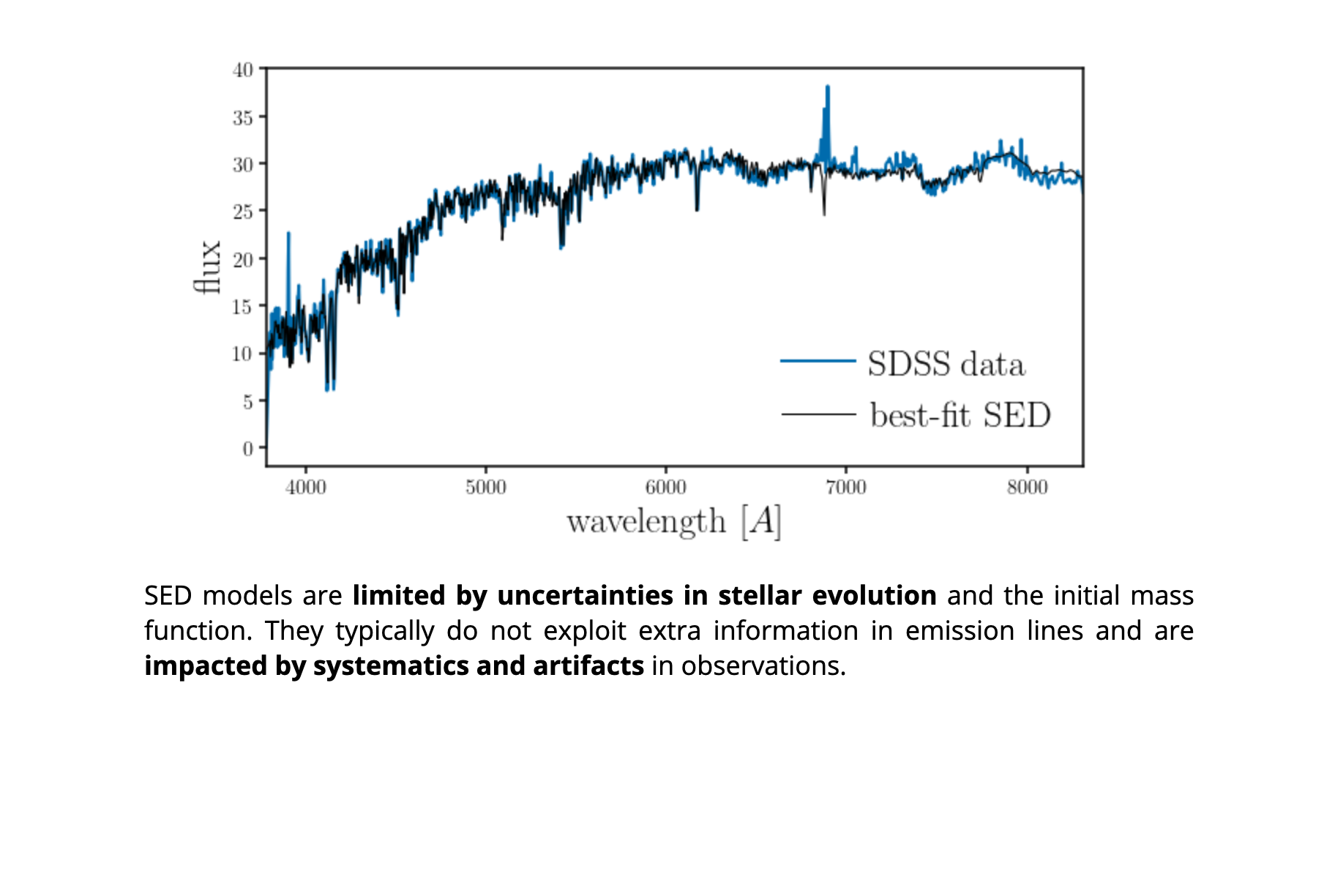
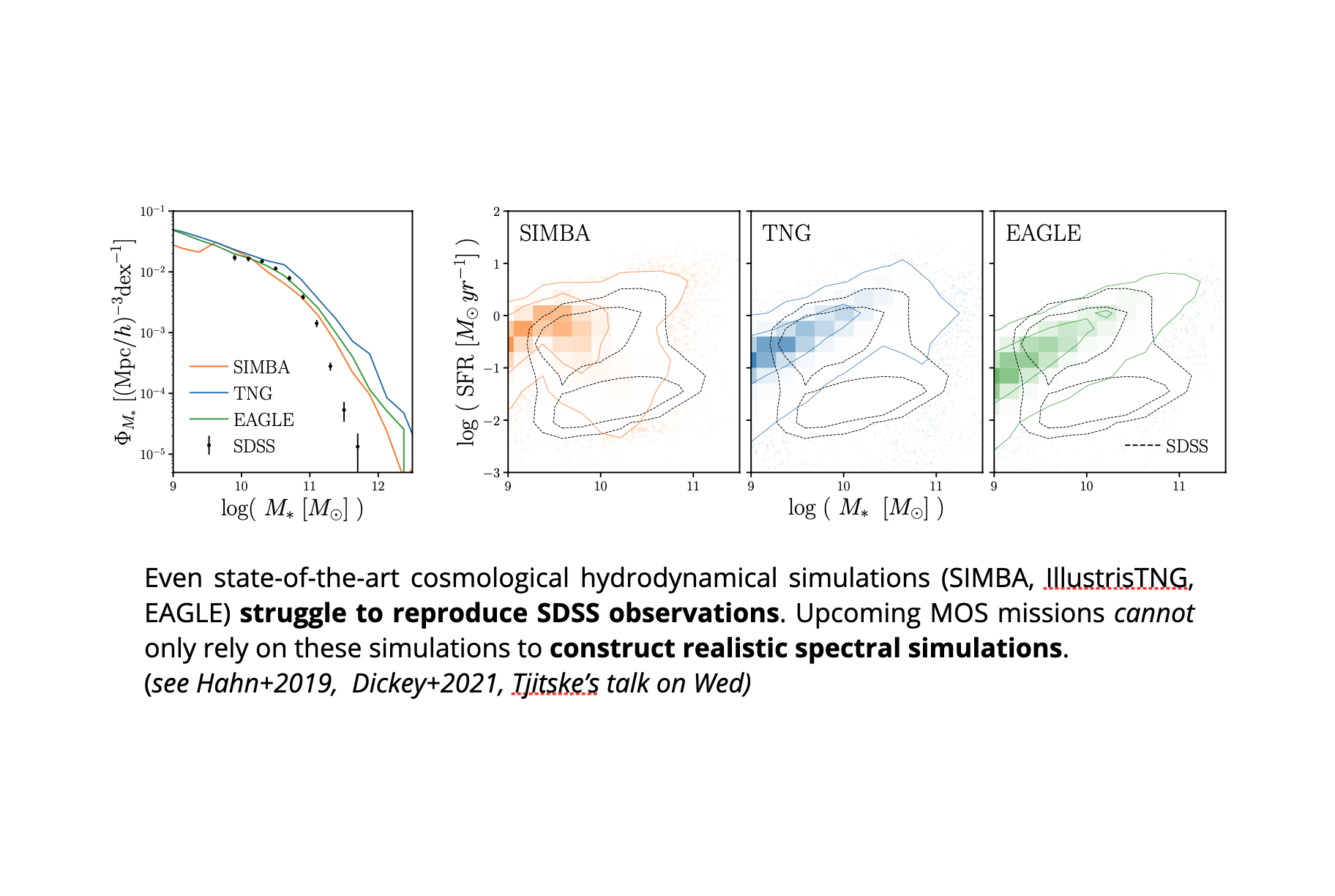
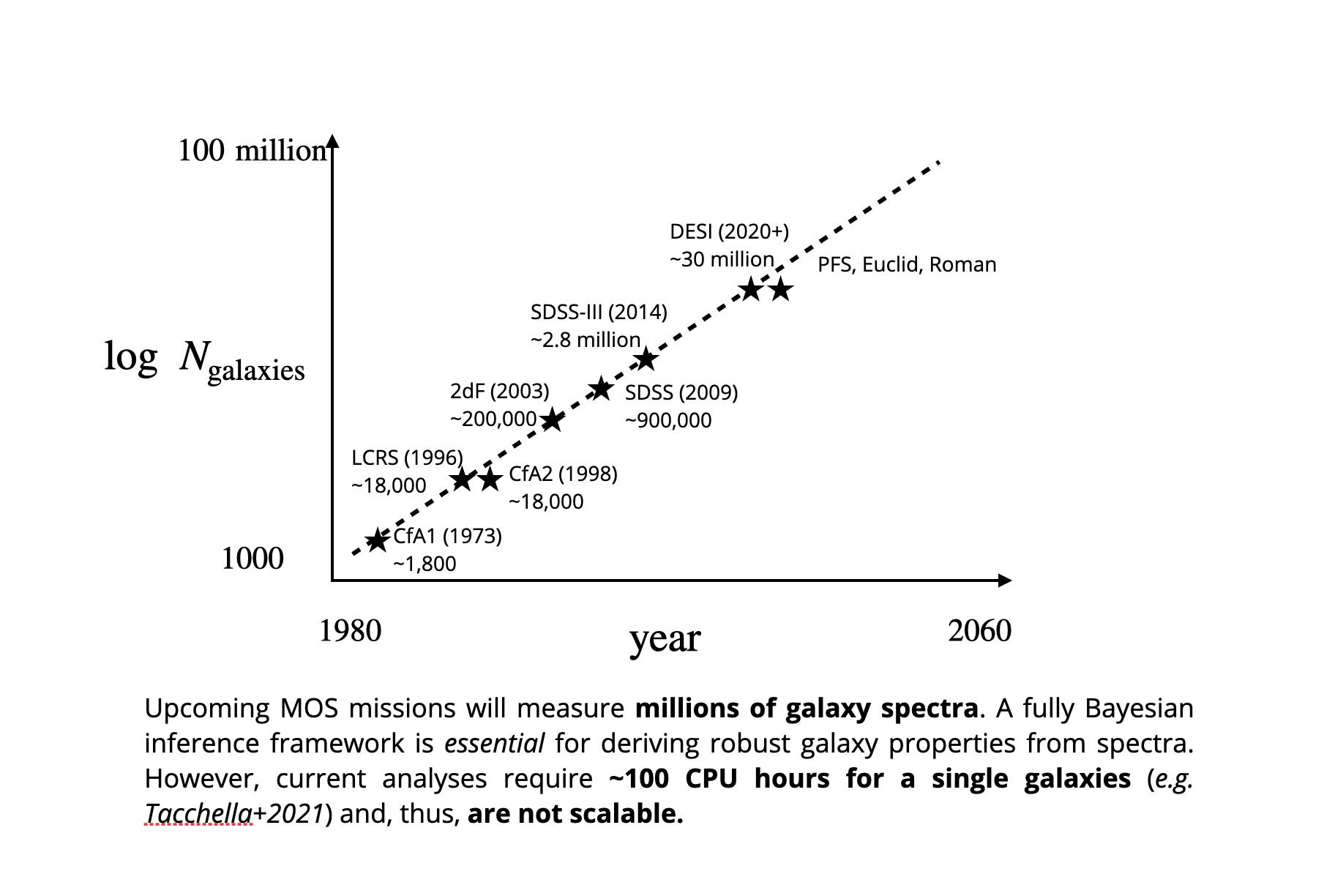
3
with deep generative models we can address each of these major challenges
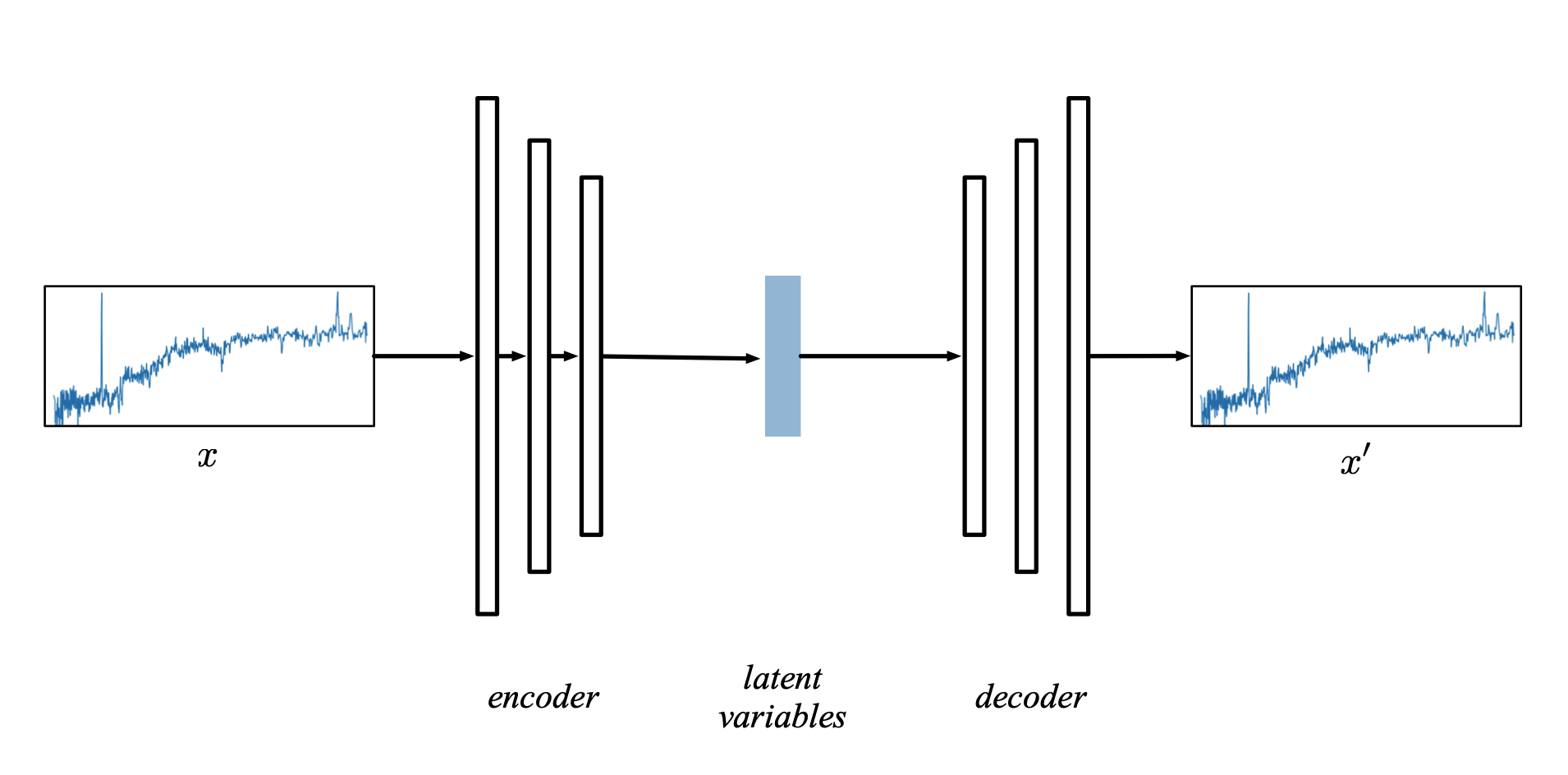
deep generative models (e.g. VAEs, GANs) provide powerful unsupervised methods for learning the data distribution
low-dimensional representation of spectra in latent variable-space
a neural network that maps latent variables to spectral-space
Variational Autoencoders, Generative Adversarial Networks
a neural network that maps spectra to compact latent variables
spectra from MOS missions
reconstructed spectra from the generative model
hover over diagram for more details

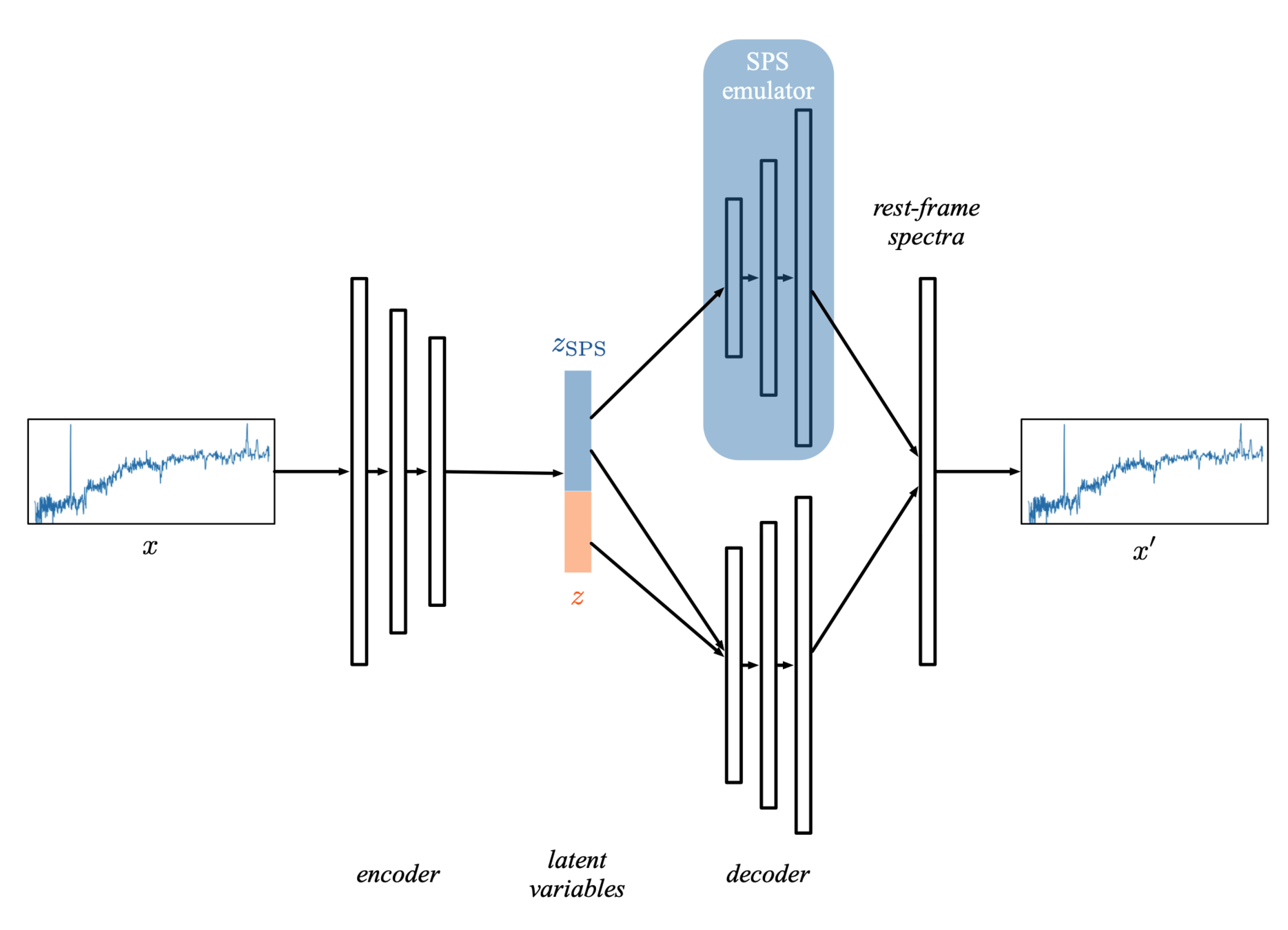
by embedding a galaxy SED model in the architecture, we can build physics- and data-driven SED models
neural network emulator of a galaxy stellar population synthesis model (e.g. Alsing+2020)
latent variable space now includes physical galaxy properties (e.g. SFH, metallicity)
physical transformation (redshifting) included in the causal structure
decoder outputs high-resolution, rest-frame galaxy SED
hover over diagram for more details

deep generative SED models can more accurately model observed spectra and account for systematics
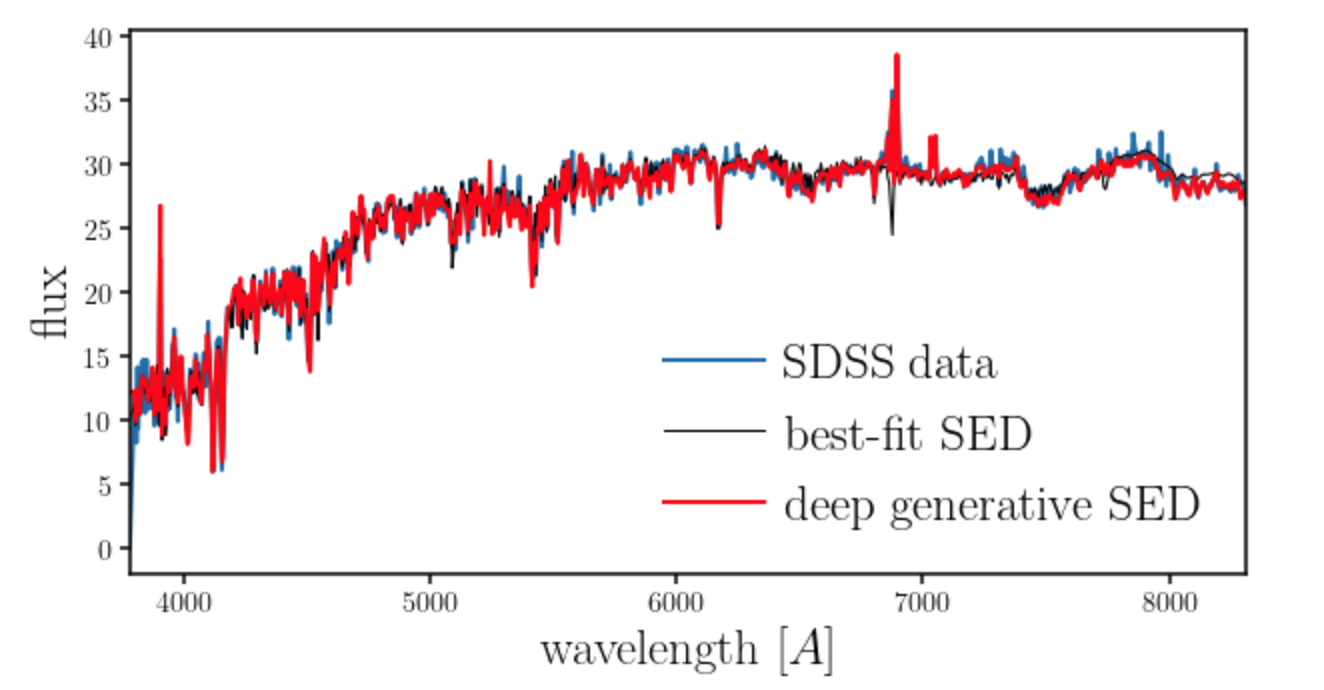
our model can accurately model emission lines, which means we can extract galaxy property information from them
our model can accurately model emission lines, which means we can extract galaxy property information from them
our model provides a higher resolution SED that matches the observed spectra more accurately
hover over the figure for more details

generative models can be combined with simulation-based inference* to accelerate Bayesian SED modeling
*a.k.a. "likelihood-free" inference
hover over text for more details


we can reframe Bayesian inference into a density estimation problem with SBI
estimate the probability distribution using simulated samples



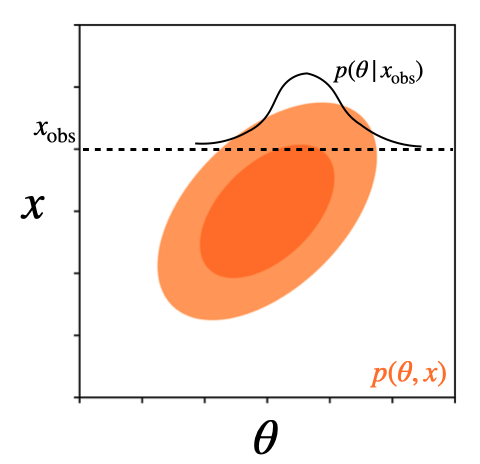
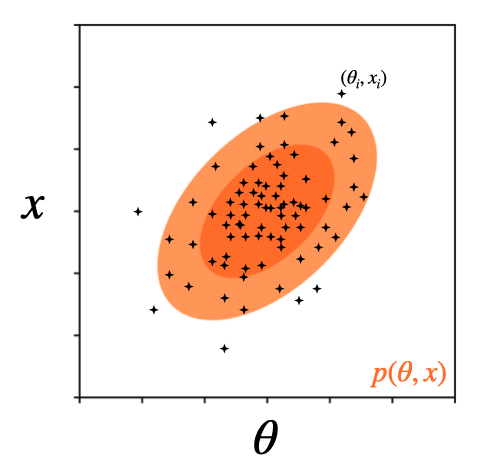
generative models can be combined with simulation-based inference* to accelerate Bayesian SED modeling
*a.k.a. "likelihood-free" inference
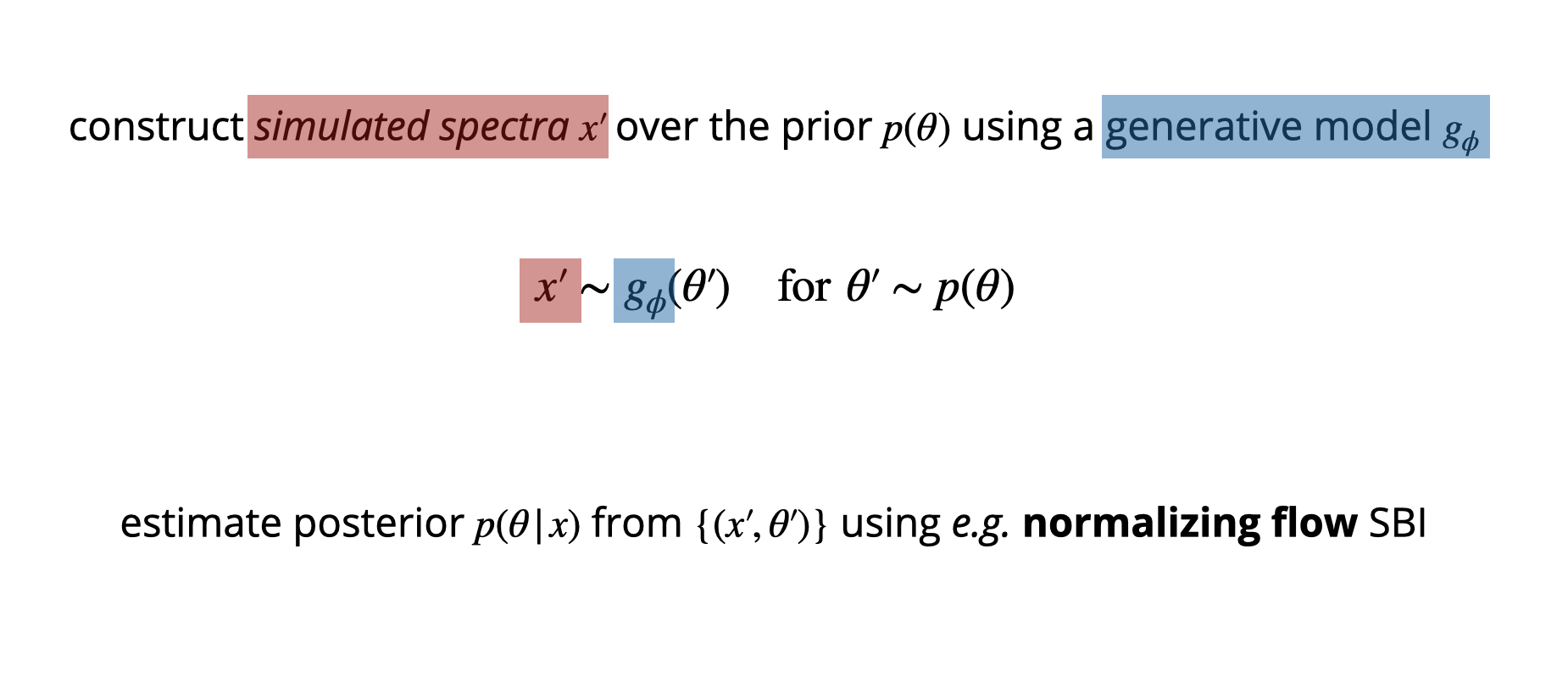

obligatory normalizing flow gif
hover over text for more details

generative + SBI based SED modeling: ~3 hrs to train, full posterior 0.2 seconds/galaxy
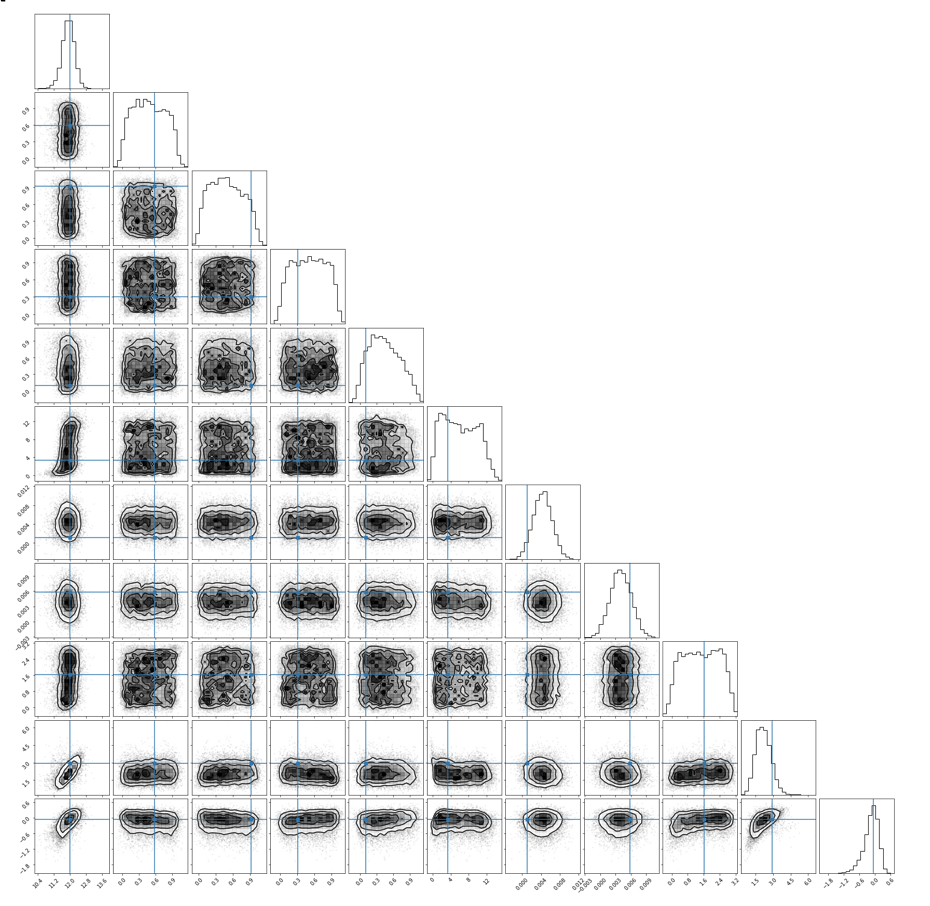
11-dimensional SED model with non-parametric star formation and metallicity histories
scalable Bayesian analysis for future spectroscopic missions


rigorous Bayesian inference --- not blackbox ML
generative model + SBI based SED modeling applied to 144k galaxies in DESI survey validation --- PROVABGS-SV
the PRObabilistic Value-Added Bright Galaxy Survey-SV will be public available later this year!
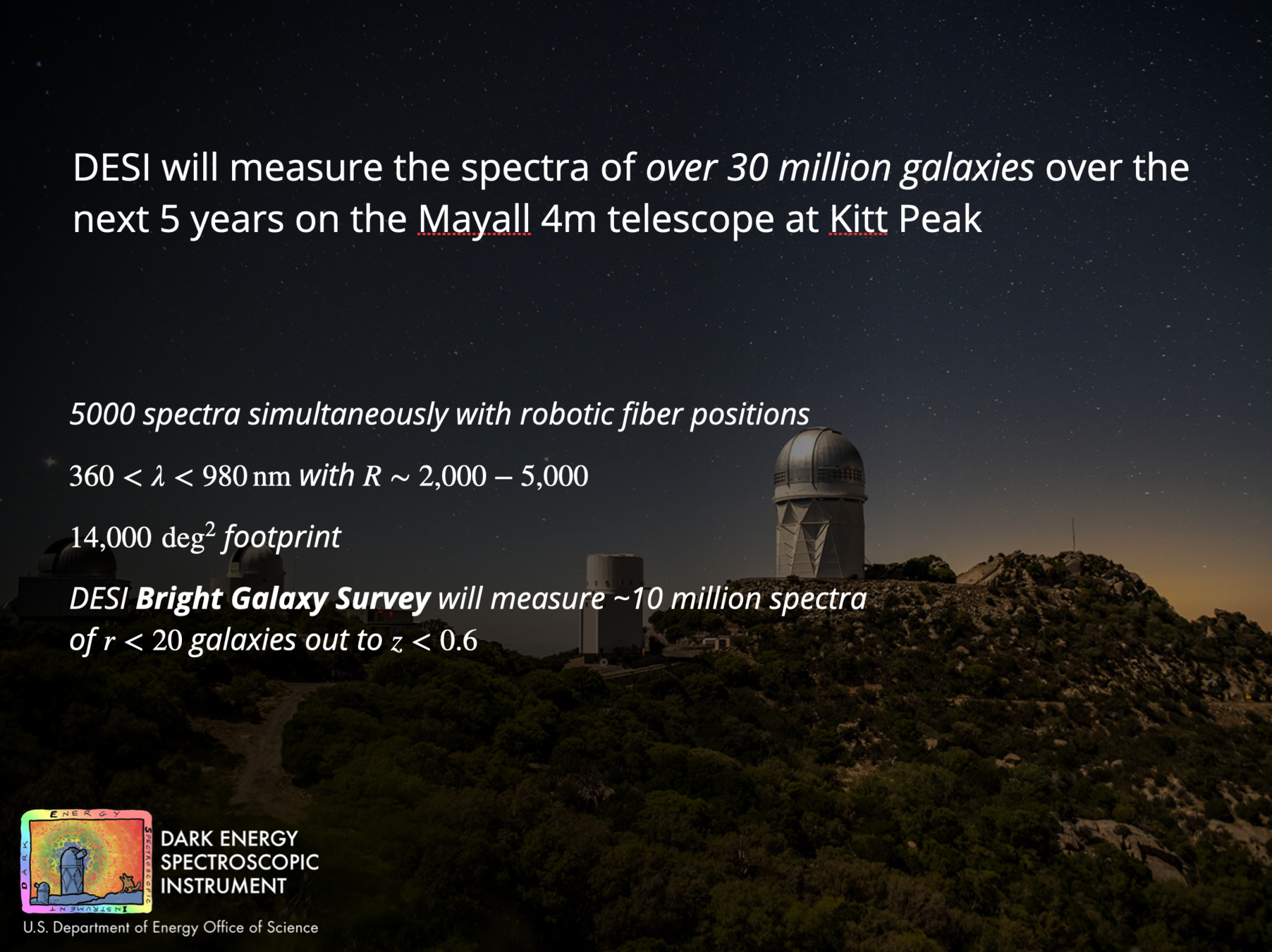
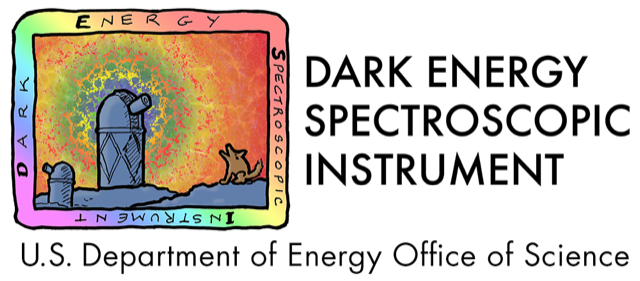

the PRObabilistic Value-Added Bright Galaxy Survey-SV will be public available later this year!
hover over the figure for more details


inferred stellar masses from full posteriors